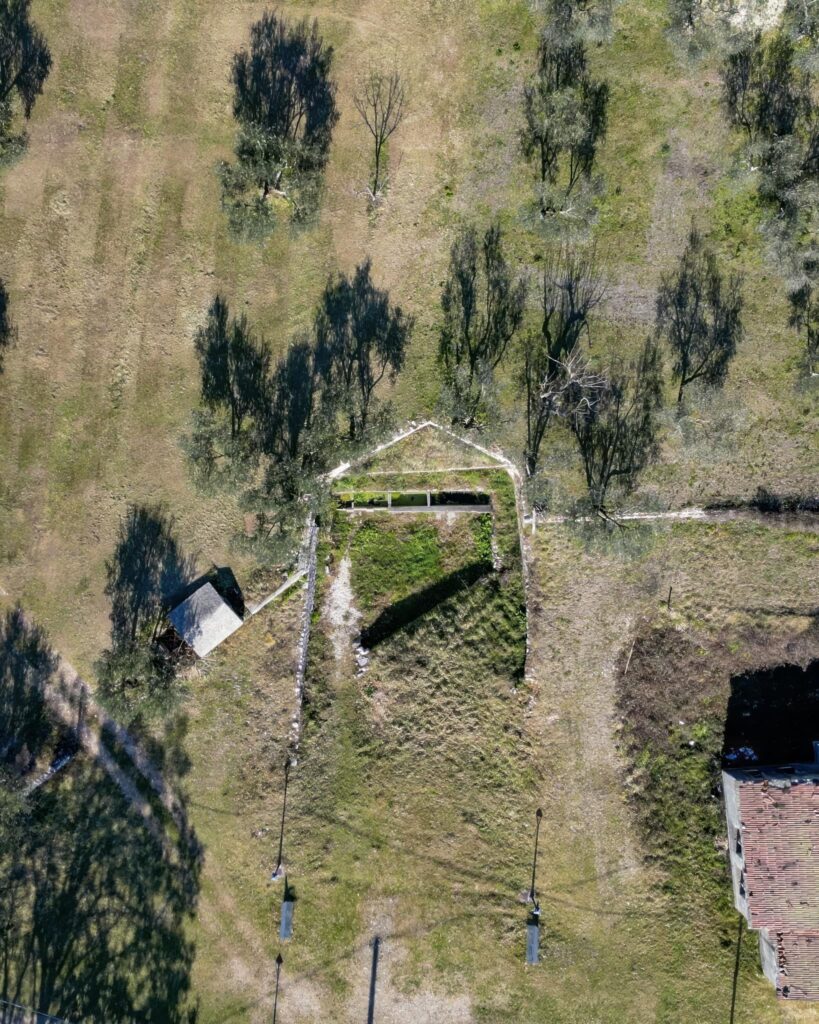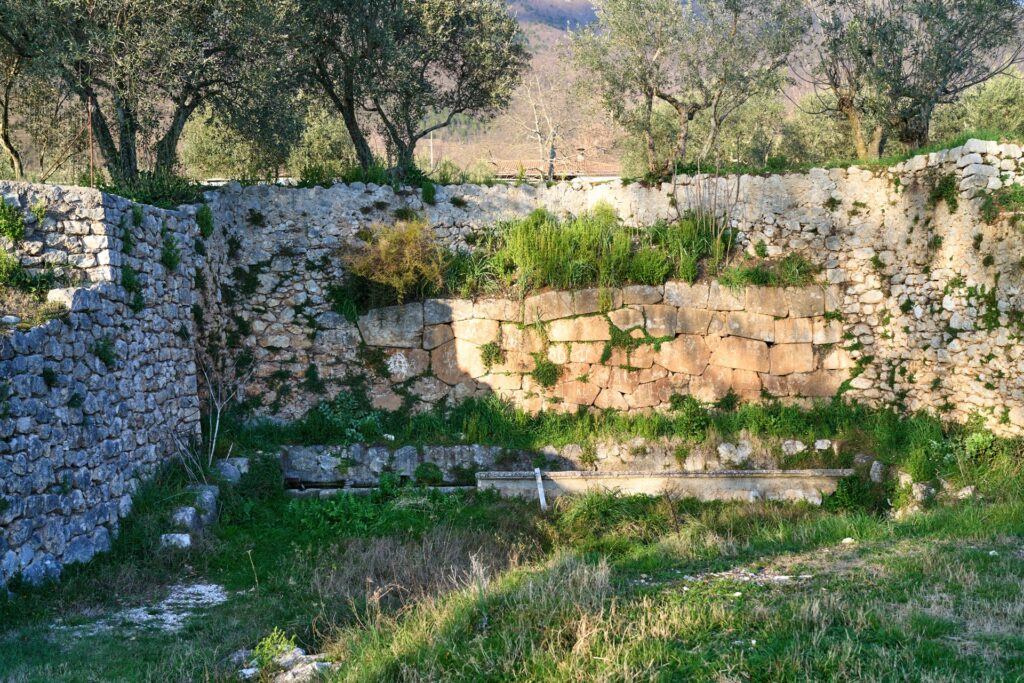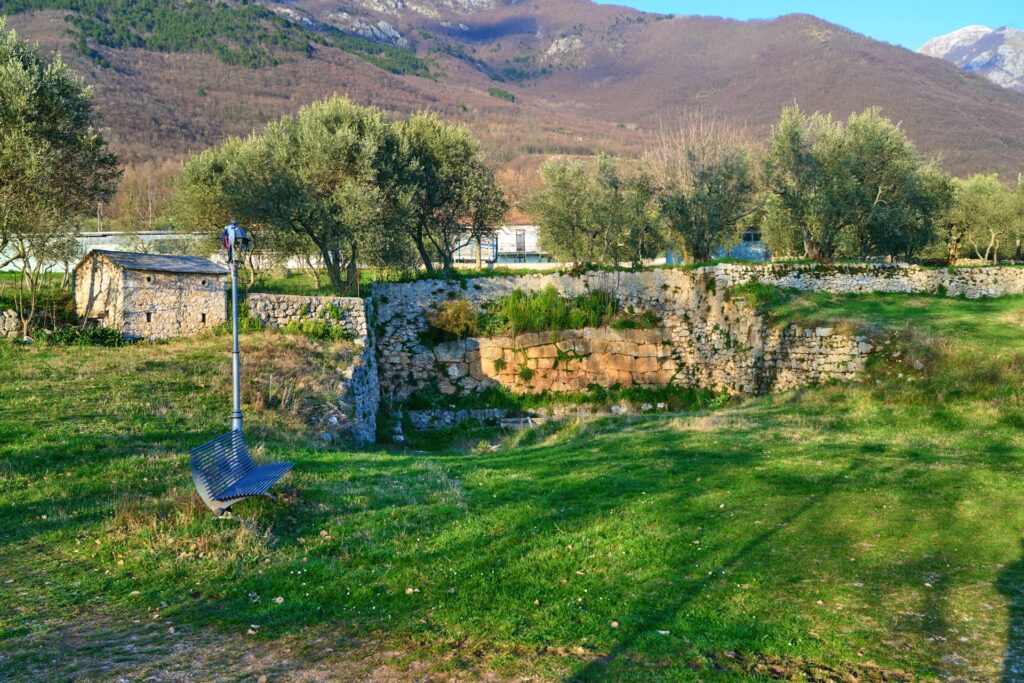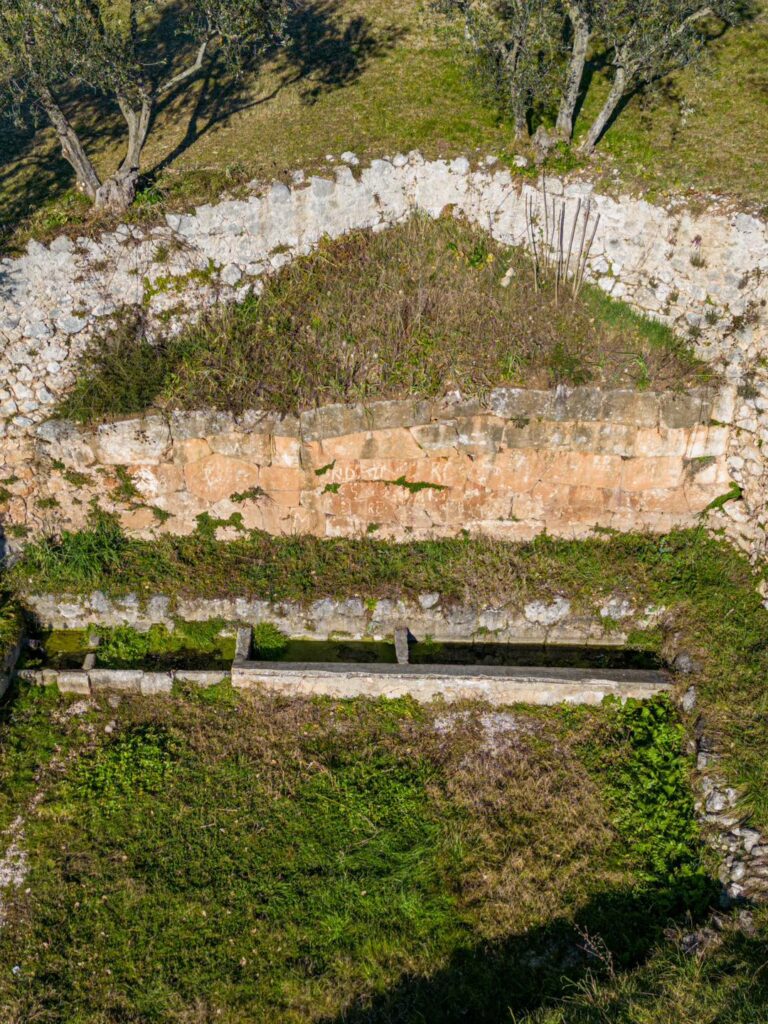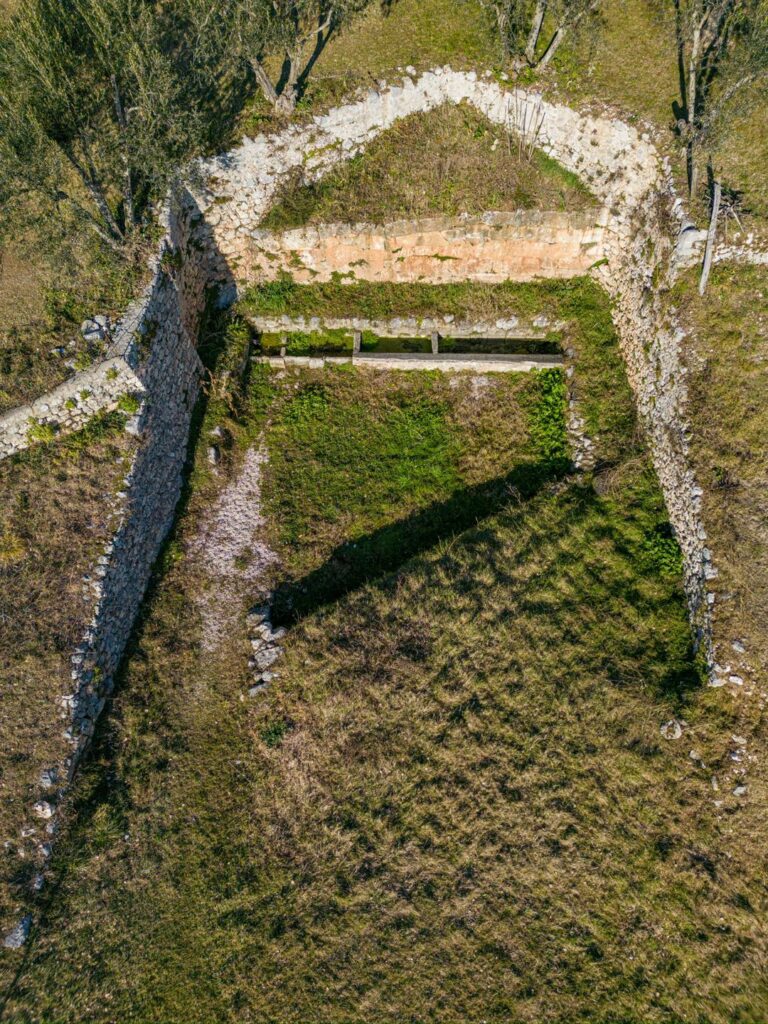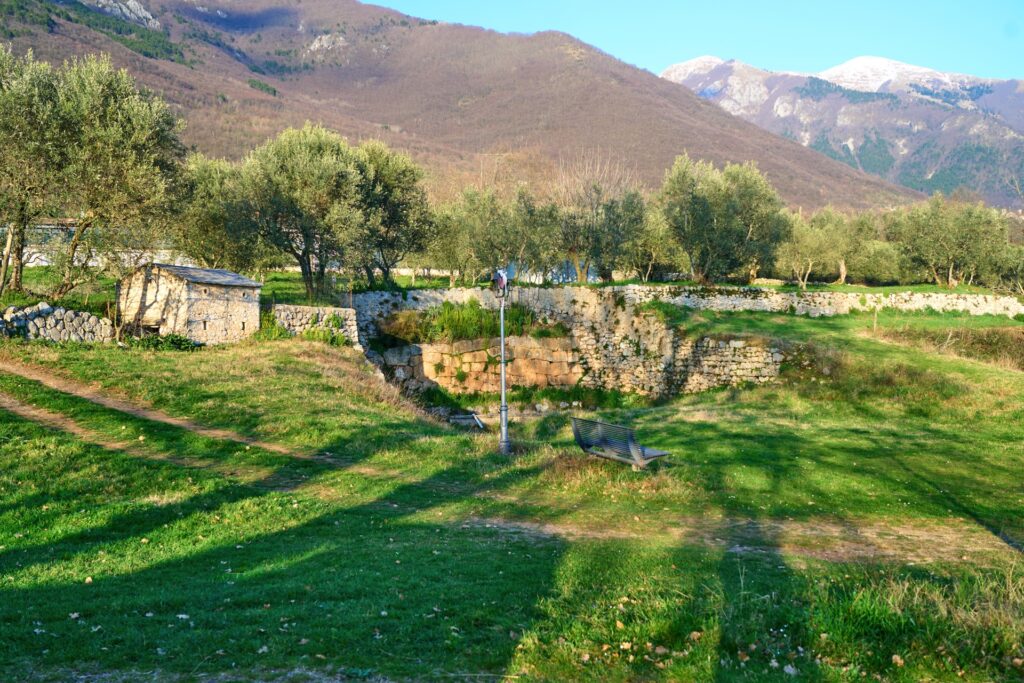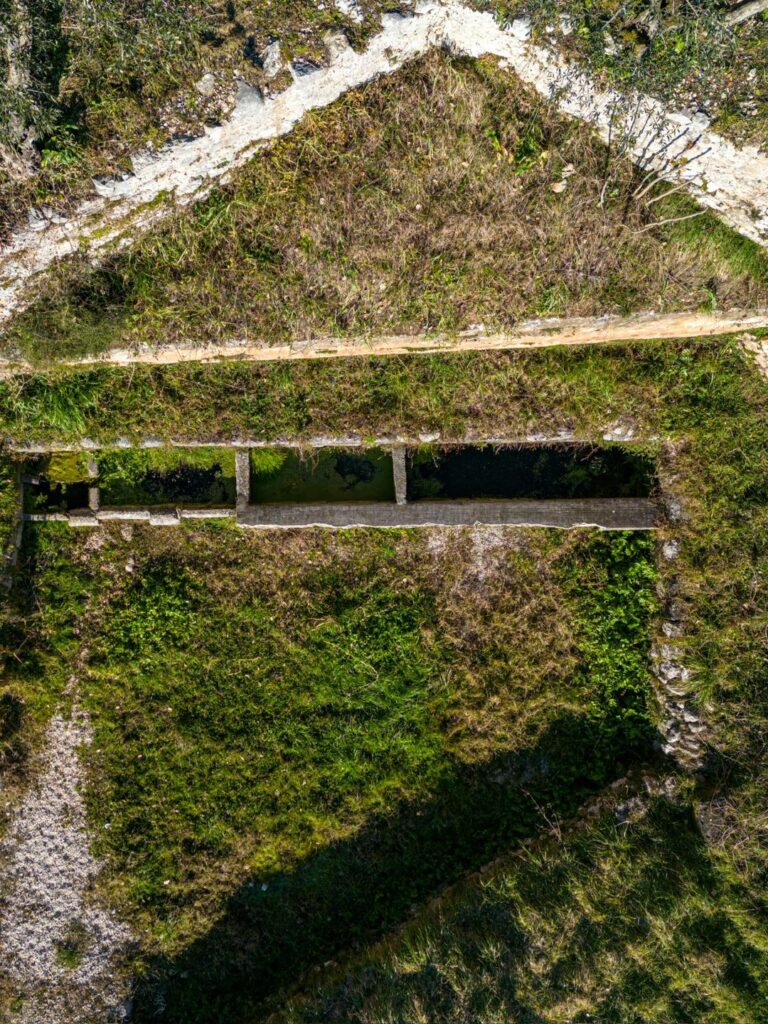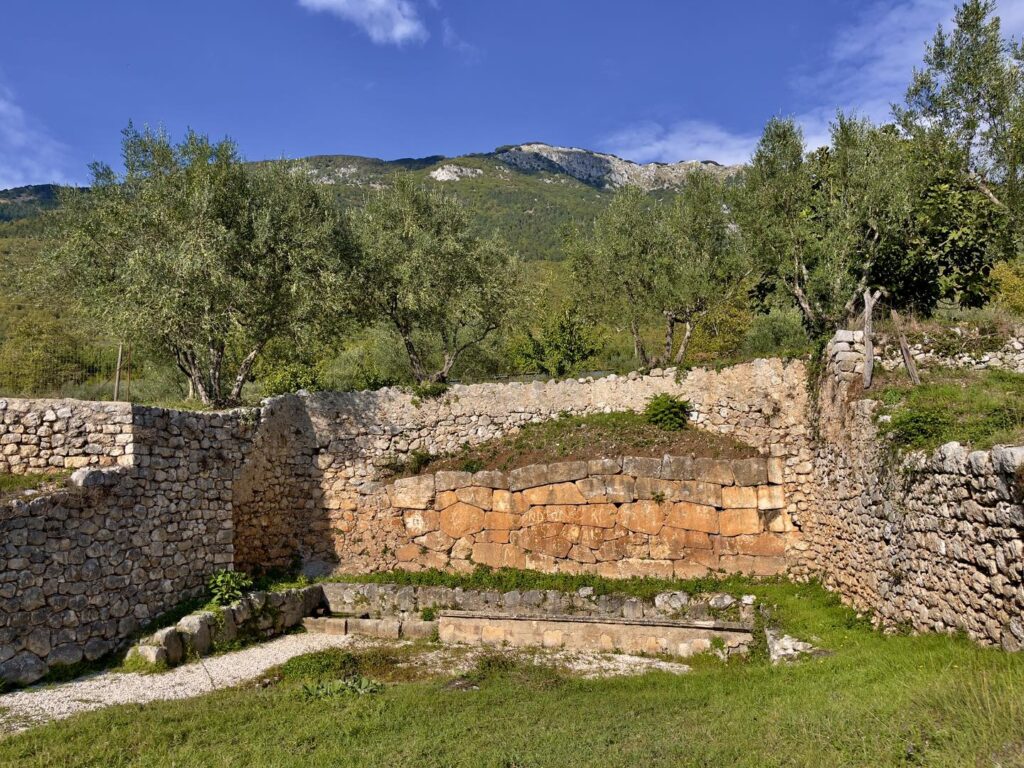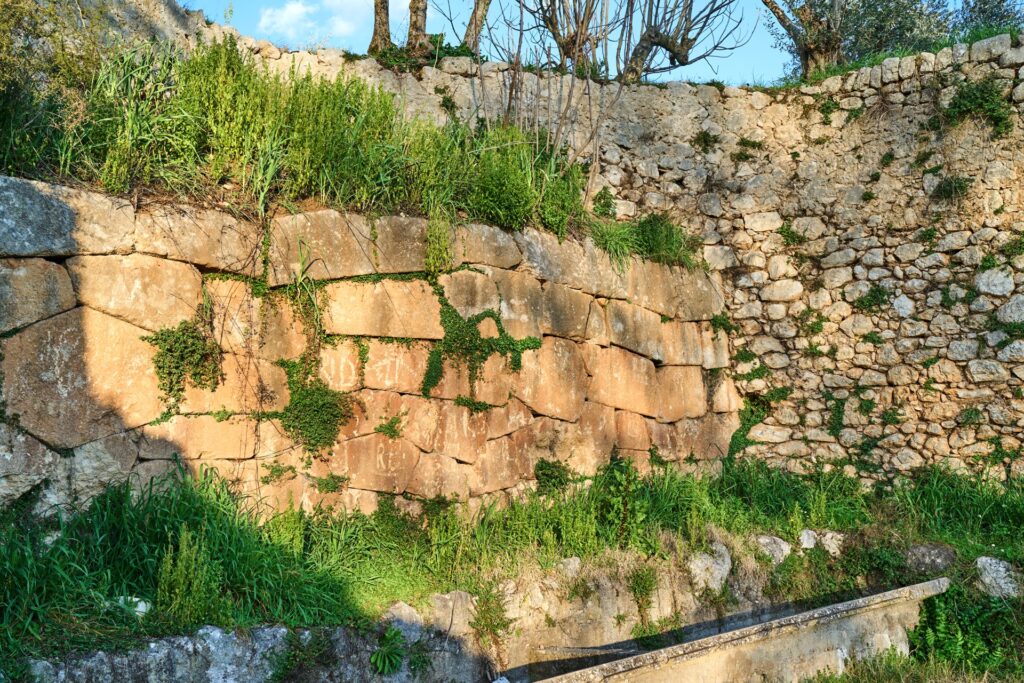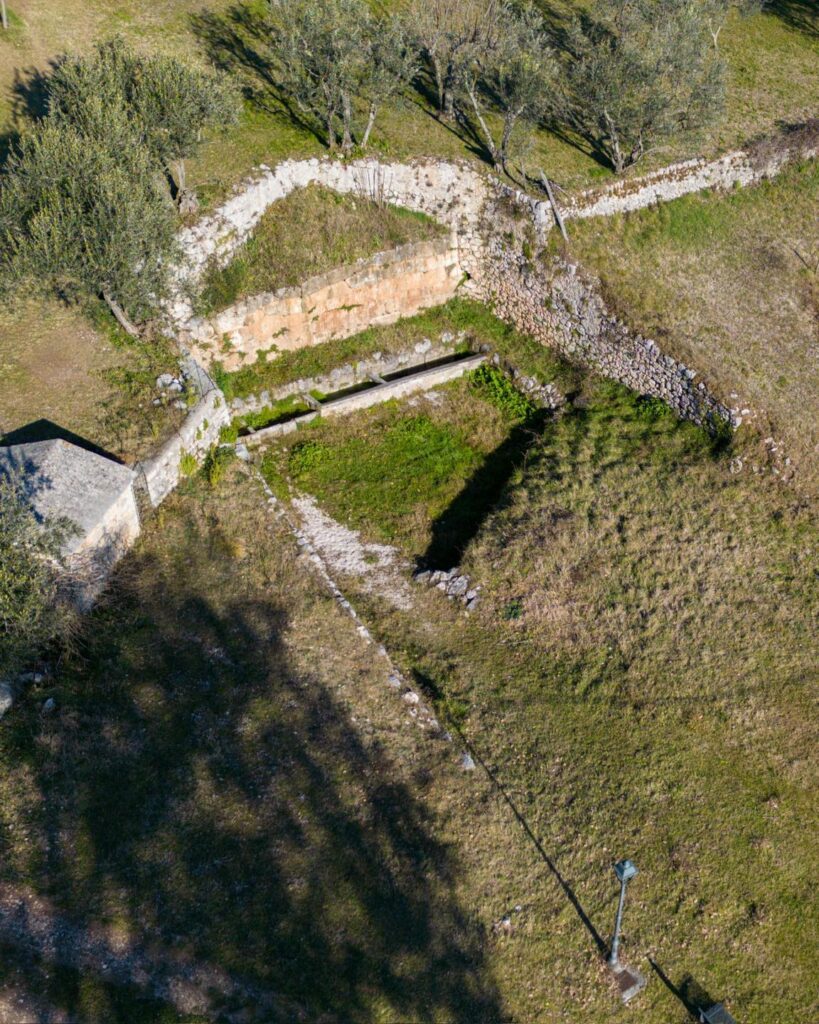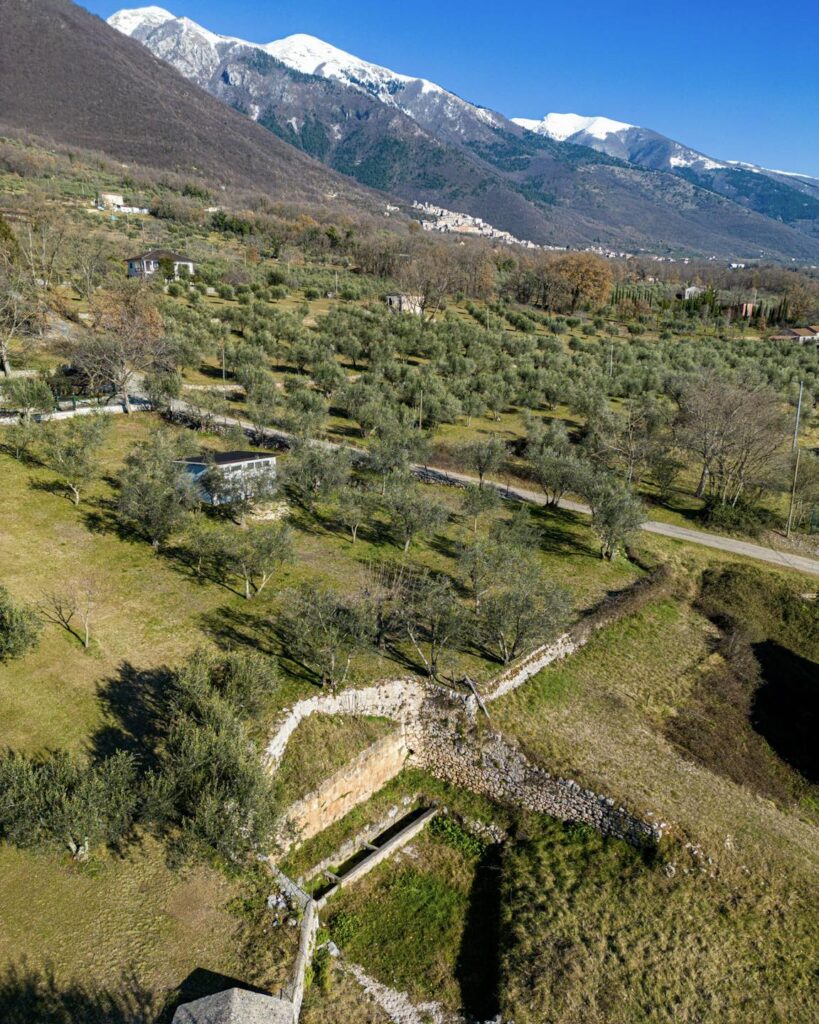San Fedele Spring and Megalithic Walls
Archaeological site
The polygonal walls of San Fedele, in the territory of San Donato Val di Comino, represent one of the few tangible remnants of a millennia-old history rooted in the ancient Samnite city of Cominium. These walls are believed to be what remains of the city walls of what was an important city of the Samnites, an indomitable people who resisted Roman expansion for centuries. The city was later destroyed by the Romans in 293 B.C. during the Samnite Wars.
The area now known as San Fedele was originally called "Sante Fele" in the local dialect, a name that may have come from "Sancte Felix" (Saint Felix), but was later mistakenly changed to San Fedele. Despite the alteration of the place name, the present name still retained some historical and religious relevance.
In Roman times, a rustic villa arose in this area that would only be discovered in the late 19th century. Located near an ancient rural fountain and a small church, the villa was located right in the area occupied by the present town of San Donato Val di Comino. Archaeological excavations at the site of the villa and in the surrounding area revealed remains of necropolis and inscriptions, now kept at the local middle school.
The presence of the Roman villa rustica confirms the importance of the area during the imperial age, when the territory of ancient Cominium continued to be used for agricultural and residential purposes. Inscriptions and other finds suggest flourishing economic activity, also evidenced by the strategic location along ancient communication routes.
The polygonal walls of San Fedele, with their characteristic structure formed by large blocks of limestone shaped and fitted together without the use of mortar, represent an example of Samnite engineering. This construction technique, also known as "polygonal work," was used to build solid defensive walls around Samnite cities. The precision with which the blocks were cut and placed makes the mastery of the ancient builders even more evident.
Although time has taken its toll, eroding and damaging parts of the walls, the site still retains a special charm. Walking along the paths that wind around the remains of the walls, one can imagine the strategic and military importance the city must have had at the time of the Samnites.
The area of San Fedele is also rich in evidence of a glorious past: remains of other buildings, ancient places of worship and structures that hark back to Roman and medieval presence are mixed in a naturalistic context of rare beauty, framed by the mountains of the Comino Valley. The polygonal walls of San Fedele are thus not only a symbol of the area's ancient history, but also an attraction for archaeology enthusiasts and those who wish to discover the deep roots of this region.
This small but fascinating corner of Latium thus offers the opportunity to take a journey through time, among the vestiges of ancient civilizations and the evocative stories that these polygonal walls continue to tell visitors who venture among its millennia-old stones.
The area now known as San Fedele was originally called "Sante Fele" in the local dialect, a name that may have come from "Sancte Felix" (Saint Felix), but was later mistakenly changed to San Fedele. Despite the alteration of the place name, the present name still retained some historical and religious relevance.
In Roman times, a rustic villa arose in this area that would only be discovered in the late 19th century. Located near an ancient rural fountain and a small church, the villa was located right in the area occupied by the present town of San Donato Val di Comino. Archaeological excavations at the site of the villa and in the surrounding area revealed remains of necropolis and inscriptions, now kept at the local middle school.
The presence of the Roman villa rustica confirms the importance of the area during the imperial age, when the territory of ancient Cominium continued to be used for agricultural and residential purposes. Inscriptions and other finds suggest flourishing economic activity, also evidenced by the strategic location along ancient communication routes.
The polygonal walls of San Fedele, with their characteristic structure formed by large blocks of limestone shaped and fitted together without the use of mortar, represent an example of Samnite engineering. This construction technique, also known as "polygonal work," was used to build solid defensive walls around Samnite cities. The precision with which the blocks were cut and placed makes the mastery of the ancient builders even more evident.
Although time has taken its toll, eroding and damaging parts of the walls, the site still retains a special charm. Walking along the paths that wind around the remains of the walls, one can imagine the strategic and military importance the city must have had at the time of the Samnites.
The area of San Fedele is also rich in evidence of a glorious past: remains of other buildings, ancient places of worship and structures that hark back to Roman and medieval presence are mixed in a naturalistic context of rare beauty, framed by the mountains of the Comino Valley. The polygonal walls of San Fedele are thus not only a symbol of the area's ancient history, but also an attraction for archaeology enthusiasts and those who wish to discover the deep roots of this region.
This small but fascinating corner of Latium thus offers the opportunity to take a journey through time, among the vestiges of ancient civilizations and the evocative stories that these polygonal walls continue to tell visitors who venture among its millennia-old stones.
Do you want to visit this attraction?
Book your vacation now.
San Fedele Spring and Megalithic Walls,
PQ5P+CM San Donato Val di Comino,
Province of Frosinone,
Italy,
Italy
-
PQ5P+CM San Donato Val di Comino, Province of Frosinone, Italy
Details
Suitable for
- Childrens, Couples, Families, Groups, Solo travelers
Best season to go
- All the seasons
Duration / time of visit
- Up to 1 hour
Type of tour
- Small groups tour, Solo tour, Private tour
Are audio guides provided?
- On request
Available languages
- English, Italian
Ticket price
- Does not require a ticket







